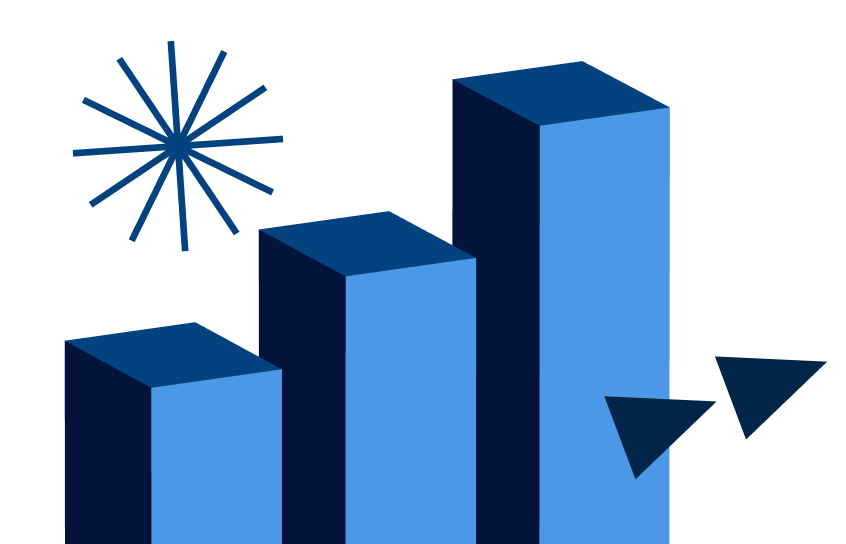401(k) Guide: What It Is and How It Works
A 401(k) plan is a tax-advantaged retirement account employers offer to help their employees save for retirement.

Many, or all, of the products featured on this page are from our advertising partners who compensate us when you take certain actions on our website or click to take an action on their website. However, this does not influence our evaluations. Our opinions are our own. Here is a list of our partners and here's how we make money.
The investing information provided on this page is for educational purposes only. NerdWallet, Inc. does not offer advisory or brokerage services, nor does it recommend or advise investors to buy or sell particular stocks, securities or other investments.
To make the most of your 401(k) plan, we'll cover how to differentiate between different 401(k) types, choose a contribution limit and select investments to help your account grow.
What is a 401(k) plan?
A 401(k) plan is an employer-sponsored retirement account that allows employees to contribute a portion of their paycheck to save for retirement. Oftentimes, employers may match part of these contributions, but it is not required.
401(k) plans generally come in two main types: traditional and Roth. The traditional 401(k) is funded with pretax money, while the Roth 401(k) takes after-tax contributions. The type of plan you have determines what tax advantages you can receive, either now or during retirement.
How does a 401(k) work?
Here’s an overview of the basics.
When you enroll in a 401(k) plan, you’re agreeing to put a percentage of your paycheck into a retirement investment account.
You can select your investments — typically target-date funds and other mutual funds — based on what your employer’s plan provider offers. (Read more on how to invest your 401(k) plan.)
Once you invest your 401(k) money, it can grow tax-deferred, meaning you don’t pay capital gains tax on your investment profits while they’re in the account.
Some employers match part or all of your contributions. This is free money added to your account as an employer benefit.
When it comes time to make withdrawals in retirement, you may have to pay taxes on the money you take out, depending on the type of plan you have.
Beginning in 2025, most employers must automatically enroll eligible employees into existing 401(k) and 403(b) plans at a 3% to 10% contribution rate. The contribution rate will increase annually until it reaches a maximum of 15%. This is a change ushered in by the Secure 2.0 Act, which aims to help workers save for retirement.
Types of 401(k) plans
The two main types of 401(k) plans — Roth and traditional — are differentiated by their tax advantages.
Roth 401(k) | Traditional 401(k) | |
|---|---|---|
Contribution limits | The 401(k) contribution limit applies to both accounts. You can contribute up to $23,500 in 2025. People age 50 and older can contribute an extra $7,500 as a catch-up contribution. Due to the Secure 2.0 Act, those ages 60 to 63 get a higher catch-up contribution of $11,250. You can contribute to both accounts in the same year, as long as you keep your total contributions under the cap. | |
Tax treatment of contributions | Contributions are made after taxes, with no effect on current adjusted gross income. Employer matching dollars must go into a pretax account and are taxed when distributed. | Contributions are made pretax, which reduces your current adjusted gross income. |
Tax treatment of withdrawals | No taxes on qualified distributions in retirement. | Distributions in retirement are taxed as ordinary income. |
Withdrawal rules | Withdrawals of contributions and earnings are not taxed as long as the distribution is considered qualified by the IRS: The account has been held for five years or more and the distribution is:
Unlike a Roth IRA, you cannot withdraw contributions any time you choose. | Withdrawals of contributions and earnings are taxed. Distributions may be penalized if taken before age 59 ½, unless you meet one of the IRS exceptions. |
Traditional 401(k)
Contributions to a traditional 401(k) plan are taken out of your paycheck before the IRS takes its cut, and your money grows tax-free.Besides the boost to your saving power, pretax contributions to a traditional 401(k) have another benefit: They lower your total taxable income for the year.
Once you invest in the 401(k), the money is protected from taxation, meaning that as long as the funds remain in the account, you pay no taxes on any investment growth: not on interest, not on dividends and not on any investment gains.
When you start making withdrawals from the account in retirement, you’ll owe income taxes on those distributions.
Traditional 401(k)s have one more caveat: After a certain age, account holders must take required minimum distributions.
Roth 401(k)
If your employer offers a Roth 401(k) — and not all do — you can contribute after-tax income to the account and your withdrawals will be tax-free in retirement.
The Roth 401(k) offers the same tax shield as a traditional 401(k) on your investments when they are in the account: You owe nothing to the IRS on the money as it grows.
Unlike withdrawals from a regular 401(k), with a Roth, you owe the IRS nothing when you start taking qualified distributions as long as you are 59 ½ and have held the account for five years or more.That’s because you’ve already paid your taxes since your contributions were made with post-tax dollars. Also, Roth 401(k)s don’t have required minimum distributions.
» Dive deeper: Our full explainer on traditional vs. Roth 401(k) plans
How much can I contribute to my 401(k)?
2025 401(k) contribution limits | |
|---|---|
Employee contribution limit | $23,500. |
Catch-up contribution limit for individuals age 50 and older | $7,500 (or up to $11,250 for those ages 60 to 63). |
Maximum employee and employer contribution | Cannot exceed the lesser of $70,000 for those under 50 ($77,500 for those 50 and up) or 100% of employee compensation. |
The last day to contribute to a 401(k) plan for 2025 is Dec. 31, 2025. There are no income limits restricting who can contribute to a 401(k) plan.
A 401(k) plan offers higher annual contribution limits than individual retirement accounts (IRAs). An IRA tops out at $7,000 in 2025 ($8,000 if age 50 and older).
If you're wondering how much you should contribute to your 401(k), many financial professionals say you should aim to contribute 10% to 15% of your income to retirement savings. According to Fidelity Investments, the average 401(k) contribution rate was 14.1% in the last quarter of 2024, and that includes employer and employee contributions.
If 10% to 15% of your salary feels too steep, it's fine to contribute what you can and work your way up as you can afford to. You aren’t required to contribute the maximum, but it’s a good rule of thumb to consider contributing enough to get your employer match if one is offered.
What are the pros and cons of a 401(k)?
Here are some advantages and disadvantages at a glance.
The portion of your paycheck that you contribute to a traditional 401(k) isn’t taxable.
No capital gains tax while money is in the account.
Some employers match employee contributions.
Higher annual contribution limit than for IRAs.
Must pay a penalty for early withdrawals.
There is an annual contribution limit.
Limited selection of investments.
» Interested in an IRA? See our picks for the best IRA accounts.

What are the 401(k) withdrawal rules?
To make a qualifying withdrawal from a traditional 401(k), you must be at least 59 ½, have a qualifying disability or qualify for a hardship withdrawal. If you don't meet these requirements, you may face a 10% early withdrawal penalty, plus you'll have to include your withdrawal as part of your income when you file your taxes.
You can withdraw emergency expenses of up to $1,000 per year without paying the 10% penalty. If the money isn't repaid within three years, no additional emergency distributions are allowed over those three years.
Still, in most cases, an early 401(k) withdrawal will trigger taxes and leave less money in the account to invest over time.
What are required minimum distributions?
Once you reach age 73, taking withdrawals from your traditional 401(k) stops being a choice. Required minimum distributions are the amounts you must take out of your 401(k) each year unless you're still working and choose to defer until retirement.
You are allowed to withdraw more than the minimum, and the distributions are included as part of your taxable income for the year. If you have a Roth 401(k), there are no required minimum distributions.
What happens to my 401(k) if I quit my job?
If you leave your job, you can take your 401(k) money with you. You can choose to roll the money into a new employer’s 401(k) plan or into an IRA.
Rollovers completed within 60 days usually are not taxable.
You also could choose to leave it where it is in your old employer’s plan, but you can’t keep contributing to it.
» Ready to get started? See the best IRA providers for a 401(k) rollover.
Frequently asked questions
Can I lose money in a 401(k)?
Yes, you can lose money in a 401(k) plan. Because the money is invested, there is always a risk of loss based on stock market movements.
How long does it take for my 401(k) to vest?
How long it takes for your 401(k) funds to vest, or be owned by you outright, depends on your employer and plan rules. Your contributions are always yours, but your employer's contributions might not be. In some plans, it may be vested immediately, while in others, it may be on a fixed schedule. The best way to find out is to check with your HR team or directly with your employer plan provider.
What is a solo 401(k)?
A solo 401(k) is a retirement investment account for business owners who have no employees. The plan can only cover the business owner and their spouse, if they have one. A solo 401(k), which the IRS calls a one-participant 401(k) plan, has many of the same features of a traditional 401(k) plan.
Table of Contents



